The reportedly sustainable prefab panels can be highly versatile
By Rob Baker, Senior Project Manager
If you look up cross-laminated timber on the internet, you’ll get pages worth of rather recent headlines suggesting its many uses in construction. A type of mass timber, CLT is emerging as a new-age construction material.
In addition to roofing and flooring, CLT panels are also used in building staircases, elevator shafts, and walls, among other things. Let’s take a closer look at the basics of CLT.
![]()
Contents:
![]()
You may have heard about CLT in the news. Sidewalk Toronto—a smart urban development project by Google’s parent firm Alphabet—focuses on sustainability, innovation, and affordability. This project will rely heavily on mass timber products like CLT to build sustainably.1 Mass timber construction uses panels with multiple layers of wood, laminated in a certain fashion.
CLT was first introduced in Europe and is gaining popularity among North American AEC professionals. Some believe it to be a phenomenal modern material for construction—thanks to its versatility and strength.
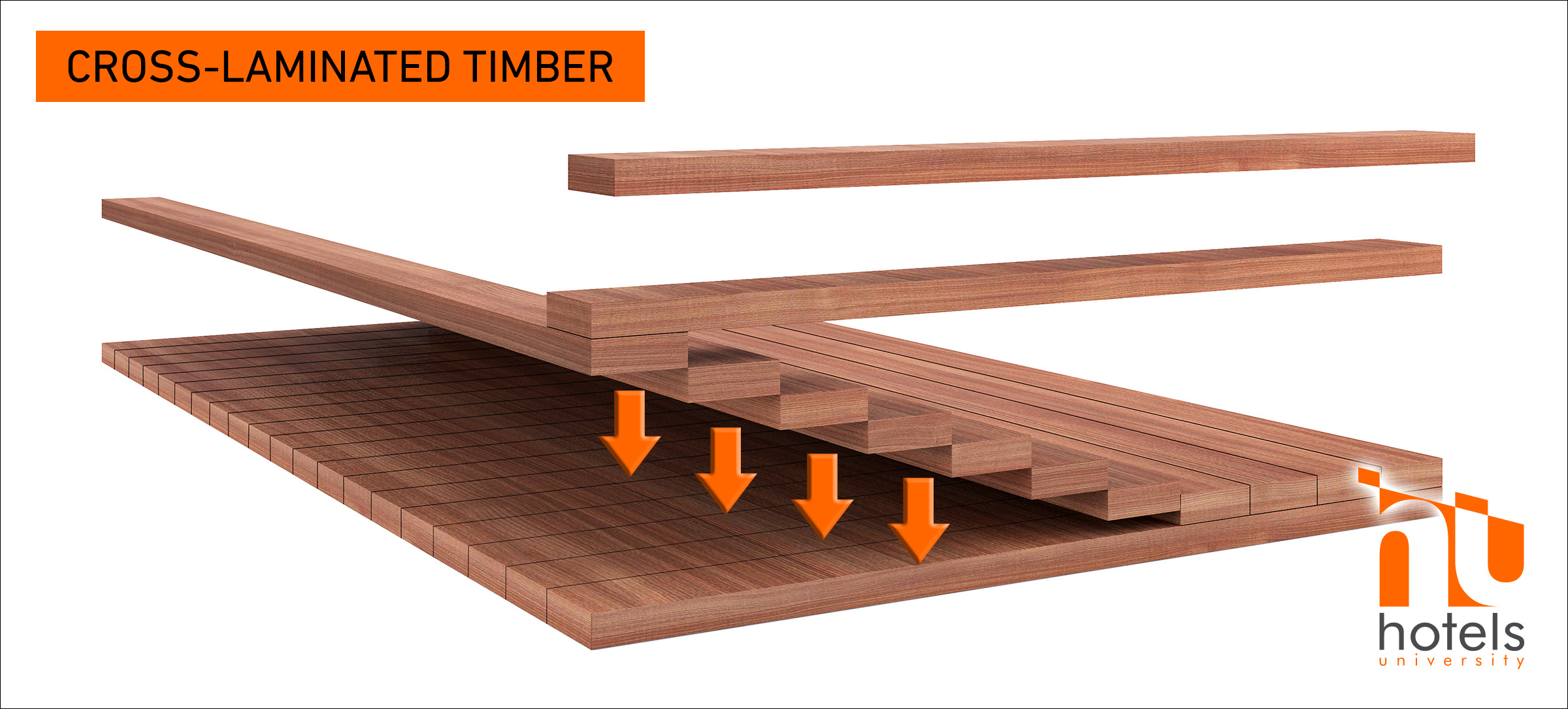
- CLT is engineered by gluing together wooden planks or lumber. Layers of planks adhere together in a perpendicular angle to produce the panels.
- A CLT panel may have three, five, or seven layers as per specific needs. Finished CLT panels are typically two to 10 feet wide, up to 60 feet long, and up to 20 feet thick.2
- With its great flexibility and strength, it is used for single and multistory construction.
- CLT is lightweight and strong. It is also reported to perform well in terms of fire-resistance, acoustics, and thermal and seismic forces.2
- CLT panels come prefabricated, which makes installation quick and easy.
- It may be economically advantageous.
- The prefab panels require fewer laborers, making it a convenient choice in a tough labor market.
- Useful to build floors, roofs, staircases, elevator shafts, and exterior walls—it’s also suitable for exposed-wood interiors.
- CLT is considered eco-friendly and sustainable.
- It is energy-efficient and produces fewer toxins and jobsite waste.
- Charring provides better and longer fire-resistance than steel or concrete.
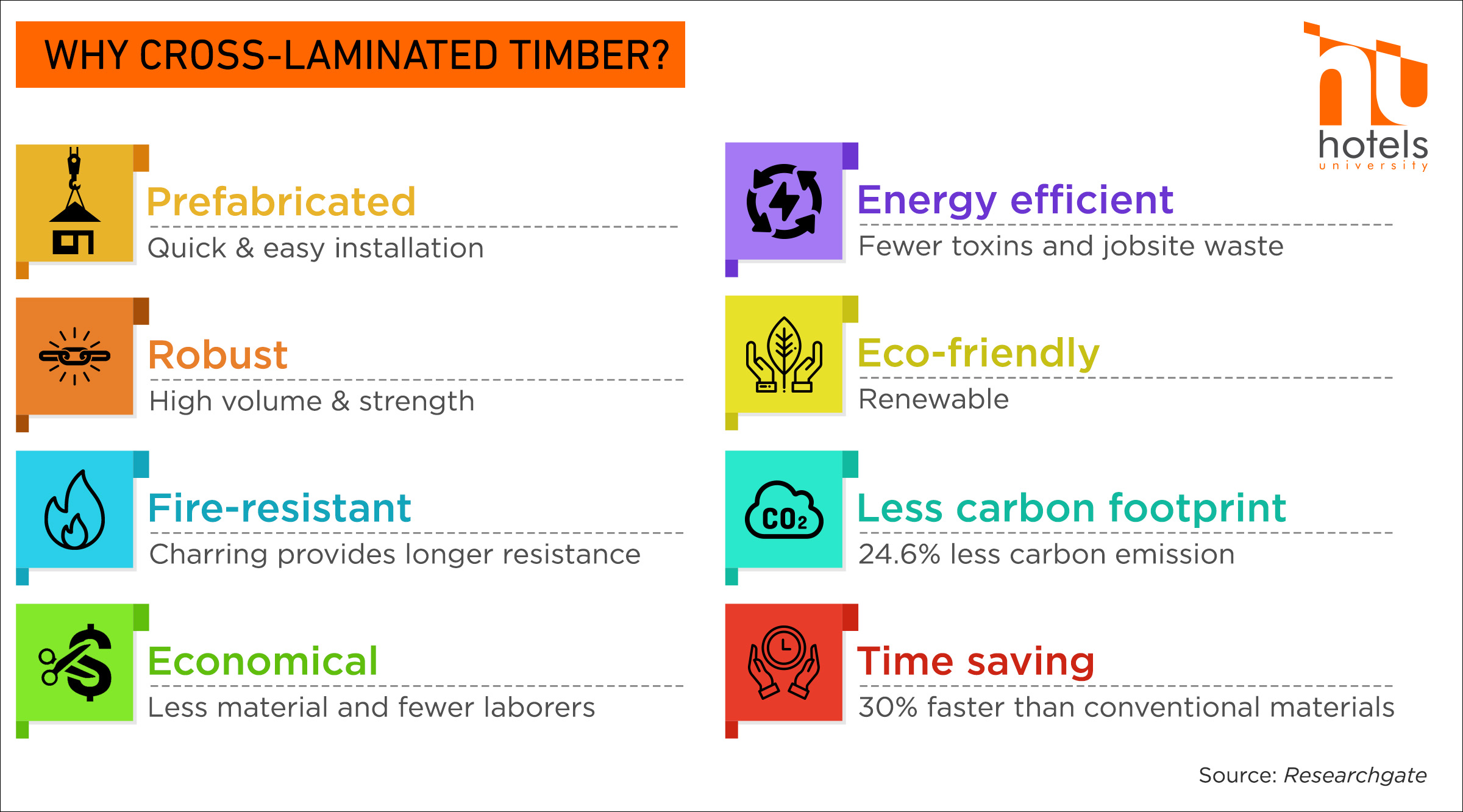
- Designing demands accuracy. Even a minor error can be expensive and tough to tackle.
- Future transformation of a CLT building may be difficult.
- It requires more insulation and cladding on the exteriors.
Can CLT Replace Concrete or Steel?
The current economic downturn has slowed down construction growth. Such desperate situations have left many developers in a dilemma. Spending on undeveloped land, building material and development gets tough. CLT could provide a solution. Here’s why:
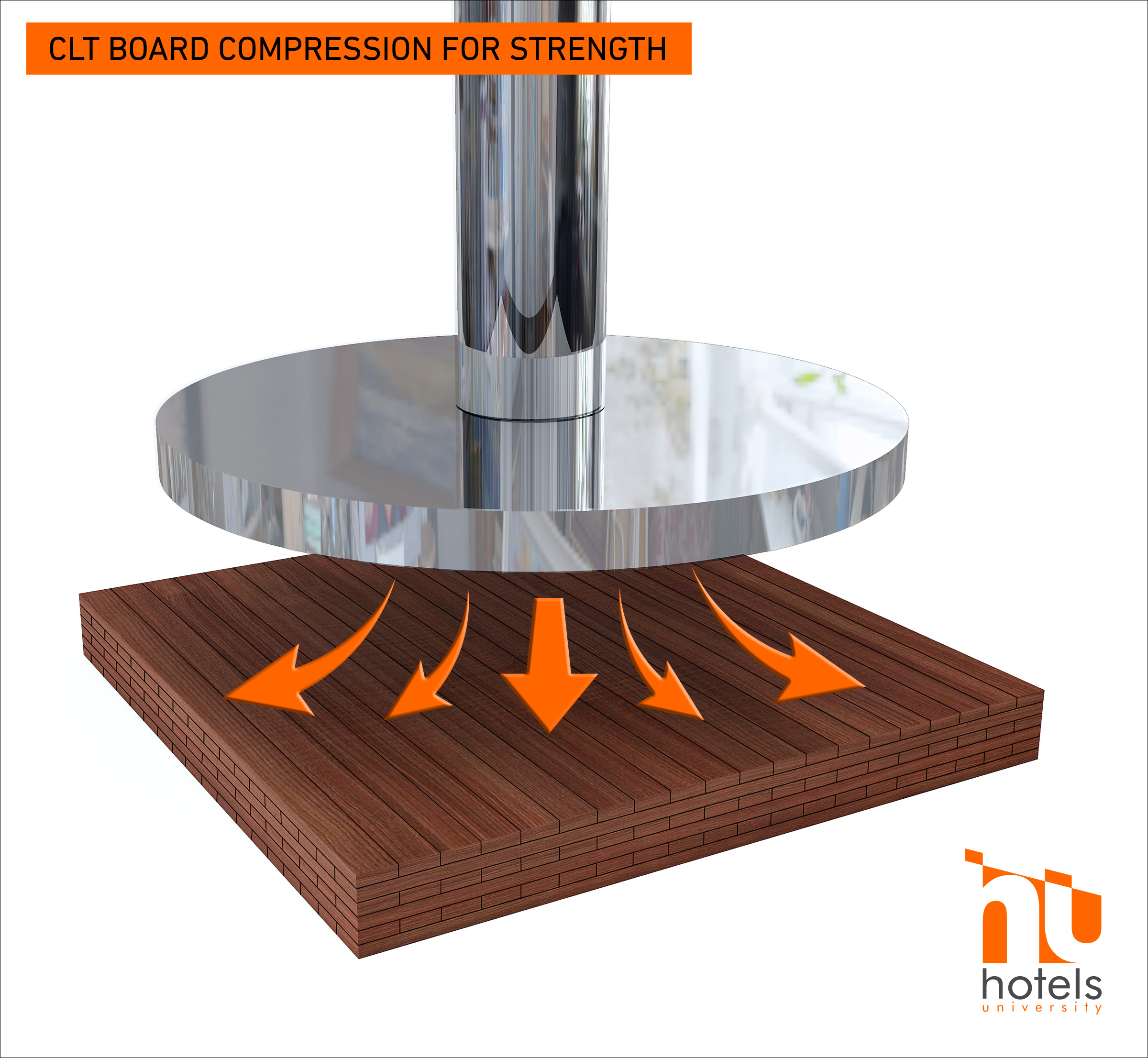
Concrete and steel costs may remain unstable. While steel prices are relatively higher, concrete comes from a finite resource—sand. Constant exploitation of functional sand in the construction industry is draining the remaining quantity. Enormous deserts are no good, as the sand grains are ultra-fine and suboptimal for construction use.3 Eventually, this scarcity might lead to an unstable market.
Recently, the world’s largest CLT building in the UK was made entirely from—you guessed it—CLT except for the concrete podium. Closer to home, a Candlewood Suites in Alabama was built with CLT panels back in 2016. (Here’s a detailed case study on the project.)
Mass timber comes in many different forms. But CLT stands out among other options for its unique qualities.
Glue-laminated timber (commonly known as glulam), laminated veneer lumber, nail-laminated timber, and timber-concrete composite are some other wood paneling options in the market.4
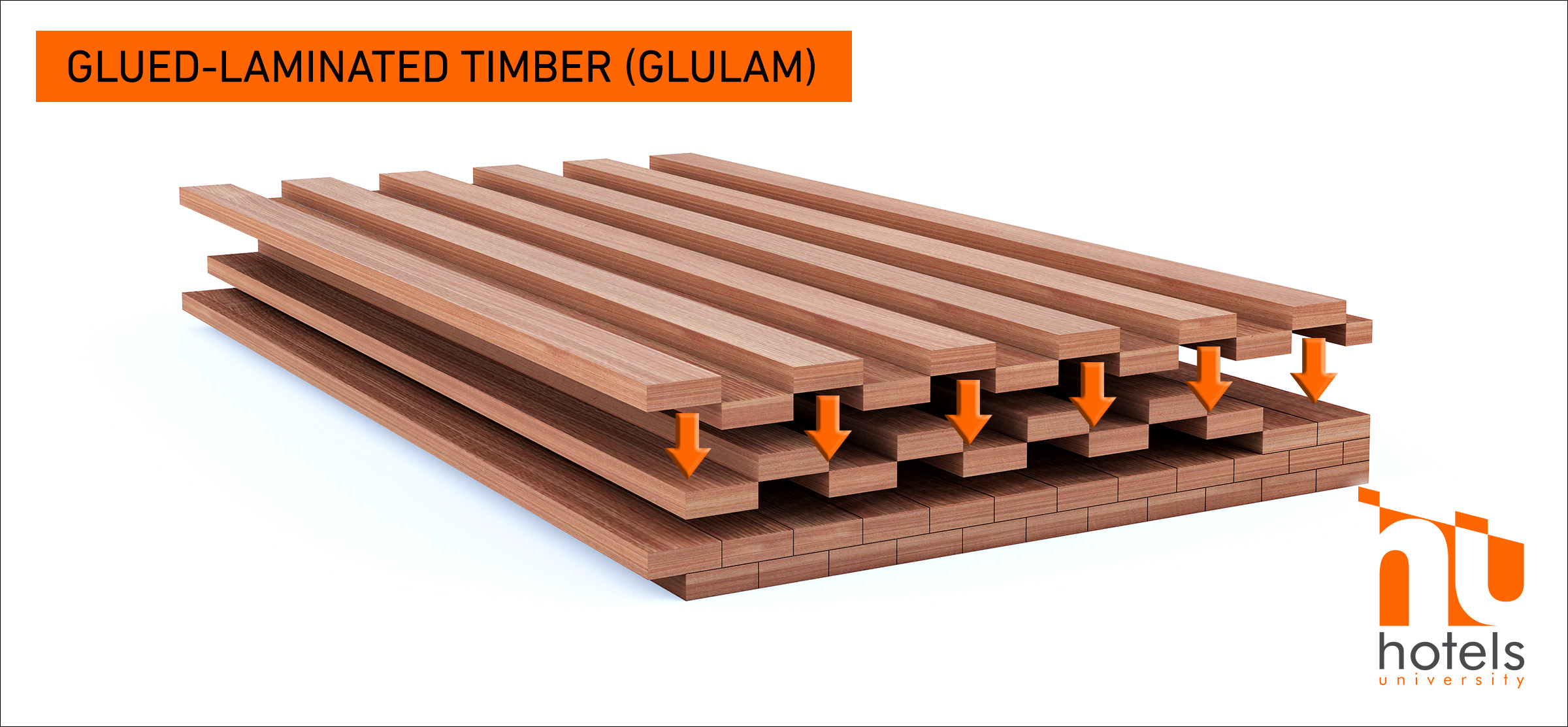
With the basics covered, feel free to get in touch if you have specific questions regarding CLT and its potential applications.
![]()
Thank you,
Blair Hildahl
Blair@hotelsuniversity.com
608.304.5228
Sources:
- http://www.wfpa.org/news-resources/blog/future-cities-of-innovation-will-require-timber/
- https://www.apawood.org/cross-laminated-timber
- https://www.archdaily.com/892466/one-of-the-biggest-sustainability-concerns-in-construction-right-now-is-sand
- https://smartgrowth.org/usfs-timber-city/


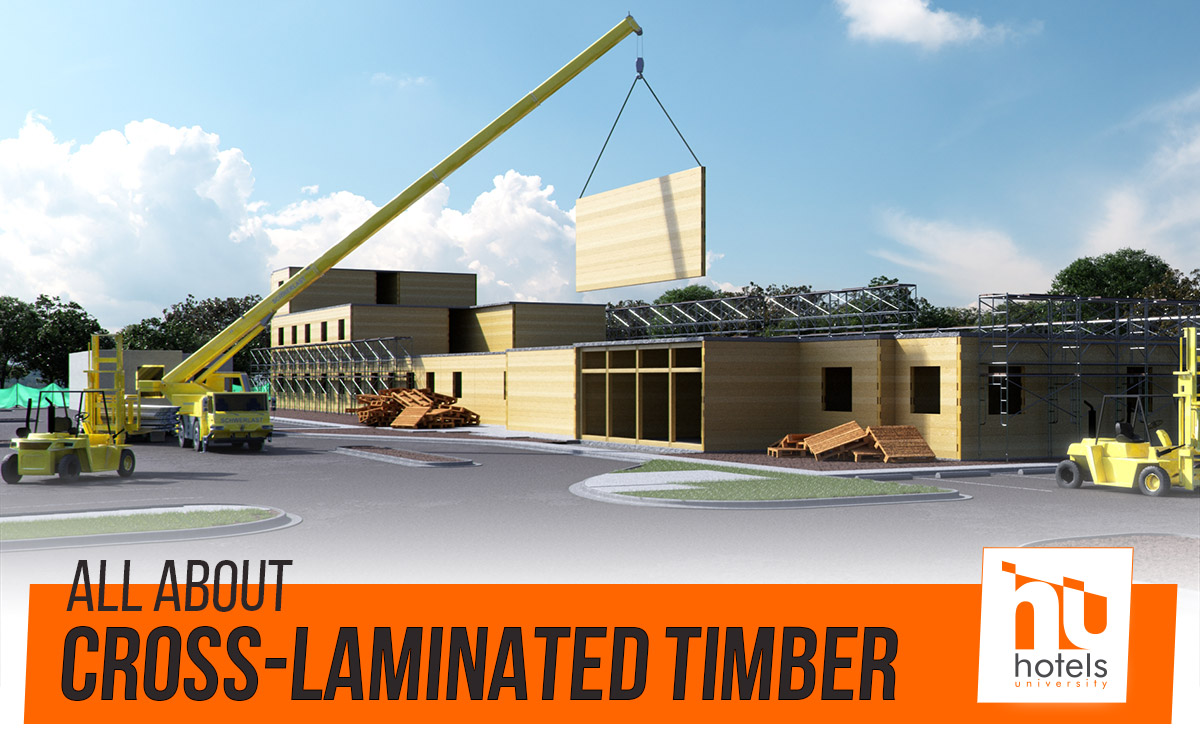





Leave A Comment